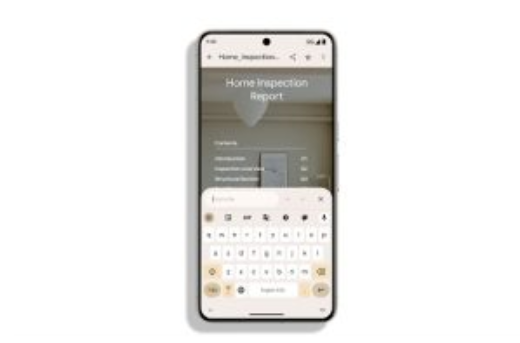Google has begun the process of rolling out Android 15, the latest version of its mobile operating system, beginning with Pixel devices.
Specifically, the company has released the Android 15 source code and made it available at the Android Open Source Project (AOSP).
While the latest major release will be available on supported Pixel devices in “coming weeks”, access will widen to third-party devices over “coming months”. Selected devices from Samsung, Honor, iQOO, Lenovo, Motorola, Nothing, OnePlus, Oppo, realme, Sharp, Sony, Tecno, vivo, and Xiaomi will be able to run the software.
Android 15
Android-15-logo-300×300.pngAndroid 15 includes a number of UI changes. For example, users can save favorite split-screen app combinations for quick access, and there’s support for simpler multitasking (see above) across apps. The new version also defaults to displaying apps edge-to-edge when they target SDK 35, and the system bars will be transparent or translucent – content will draw behind by default.
For graphics – with Vulkan as Android’s preferred interface to the GPU – Android 15 includes ANGLE as an optional layer for running OpenGL ES on top of Vulkan. “Moving to ANGLE will standardize the Android OpenGL implementation for improved compatibility, and, in some cases, improved performance,” says Google.
There are also camera and media improvements, support for Private spaces, recording detection, developer support, and typography tweaks. You can see a summary of all Android 15 new features.
App compatibility
Matthew McCullough – VP of Product Management, Android Developer at Google – writes:
“We’re working to make updates faster and smoother with each platform release by prioritizing app compatibility. In Android 15 we’ve made most app-facing changes opt-in until your app targets SDK version 35. This gives you more time to make any necessary app changes.”
“To make it easier for you to test the opt-in changes that can affect your app, based on your feedback we’ve made many of them toggleable again this year. With the toggles, you can force-enable or disable the changes individually from Developer options or adb.”
Images: Google – (top) updates to PDF rendering include searching an embedded PDF file
See also: Google plans $1 billion Hertfordshire data centre for AI
Original article source:
FAQ
- What is Android 15?
Android 15 is the latest version of Google’s mobile operating system. It includes new features, improvements in user experience, enhanced privacy, and performance optimizations over previous Android versions.
- When did Google start rolling out Android 15?
Google has begun rolling out Android 15 as of [specific month/year, depending on your date]. The source code is now available on the AOSP, making it accessible to developers and manufacturers.
- What is AOSP?
AOSP, or Android Open Source Project, is an initiative by Google that provides the source code for the Android operating system. Developers and manufacturers can use the AOSP to build and customize their own Android versions.
- Which devices will get Android 15 first?
As with most Android releases, Pixel devices from Google are typically the first to receive new updates. Other manufacturers will roll out Android 15 to their devices after customization and testing phases, which may vary by brand and region.
- What are the new features in Android 15?
While the complete list of features may vary as updates progress, Android 15 is expected to include improvements in multitasking, enhanced privacy settings, AI-powered enhancements, better performance, and more efficient battery management.
- How do I get Android 15?
If you own a Pixel device, you will likely receive an over-the-air (OTA) update when Android 15 becomes available for your device. If you’re a developer, you can access the Android 15 source code via AOSP and compile it for use on compatible devices.
- Will my phone support Android 15?
Compatibility will depend on your device’s manufacturer and model. Generally, flagship devices released within the past couple of years should be eligible for the Android 15 update, though some lower-end or older devices may not be supported.
